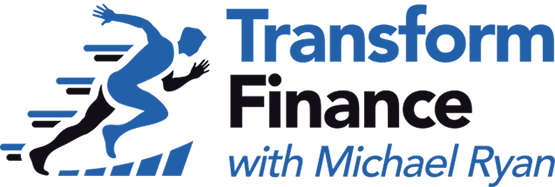View All Articles
Payment Predictability in Unpredictable Times
This article appears in our Q1 2022 issue of Finance Transformation Magazine. To download the issue, click here
Anthony Venus, Co-Founder and CEO of YayPay by Quadient, explains why predicting payment is the holy grail of cashflow management. In these highly unpredictable times, the latest in AR technology and automation will bring your CFO renewed confidence and certainty about when they will get paid.
How different is your business today, compared to 18 or even 24 months ago? For many of you, it's likely very different. Customers are not physically visiting your place of business nearly as often, if at all. Collecting cash has become more challenging and the need for new ways to transact is accelerating the need for digital transformation.
Your ability to respond to changing market conditions and events, and then communicate those changes, is critical to survive. Some of you have up ended your entire business model to meet new market demands, while others are optimising existing processes.
Regardless of where your business is in the spectrum, if you aren't talking to your customers regularly about your business - and their business with you - and leveraging technology and automation to make it happen, you're going to fall behind your competition. It's that simple.
Your customer communications programme - and the wide variety of touchpoints it consists of - is a superpower that can completely change the health of your business and brand. The changes in our economy over the past 24 months have set new standards for how businesses must operate, to stay competitive, to stay accessible and most of all, to stay profitable.
Businesses that have relied on manual Accounts Receivable (AR) processes have struggled the most, as office shutdowns prohibited AR teams from conducting their daily processes and a lack of cloud-based, automated tools restricted access to both data and AR processes to on-site only.
Businesses that had partial automation, suffered less, but still suffered. A recent McKinsey Study* revealed that 44% of businesses have struggled with collections since the onset of COVID-19. In addition, their Days Sales Outstanding (DSO), the measure of how quickly companies can collect cash from their customers, increased from 39 to 43 days.
The McKinsey Study highlighted the processes impacted most by the pandemic were:
1. Payment's Acceptance (47%)
2. Customer Credit Checks (45%)
3. Collections (44%).
This points to the two most critical factors to efficiently managing the credit to cash process - access to data and automation.
It takes 67% more time** to follow up on payments via a manual process than an automated one. In addition to the time factor, the added financial cost of managing this manually is eating right into your profitability.
If you are among the 54% of innovative business leaders who intend to invest intelligently in a more efficient and cost-effective way to manage their credit to cash process, then you're taking a closer look at data access and automation.
Access to data is critical for both your teams and your customers. With your teams, it means the ability to get the data they need, when they need it, to better serve your customers faster and keep your business moving forward.
For your customers, it means transparency into their account and the ability to see when invoices are due, how much they owe, and if there are any outstanding issues that require resolution.
Automation is critical to ensuring you have consistent, repeatable
processes running smoothly,
saving your AR teams time, and setting expectations with your customers.
When AR processes are automated, businesses see an average DSO reduction of 23%. Almost 75% of all errors and inefficiencies in the credit to cash process are due to human error. This can all but be eliminated with smart automation.
With appropriate access to data and smart automation for AR, businesses can significantly impact the customer experience, resulting in higher customer loyalty as well as higher revenues, and a faster cash flow.
In our discussions with various CFOs ranging from start-up companies on an aggressive expansion plan as well as companies that are simply streamlining current processes, there is a common understanding that digital adoption is getting them paid faster.
Cashflow forecasting is not a new tool to the market, but robust payment prediction is. The ability to understand payment trends at a click of a button or better still, get an alert report when risks are identified outside certain tolerances is revolutionary. Payment predictability is at individual invoice level.
One of the biggest concerns CFOs have with the traditional forecasting approach is that the blanket methodology of applying last year's collections plus sales increase is largely inaccurate and relies heavily on 'tribal knowledge' within the credit management team to understand who is likely to pay and more importantly, when.
Technology advancements have allowed businesses to leverage machine learning and predictive analytics to forecast with up to a 94% accuracy when monies owed, will be paid. YayPay's customers are benefitting from this level of forecasting accuracy right now.
To find out how your organisation can realise these same benefits, we're offering a free AR health check to all Finance Transformation Magazine. To request your AR health check, simply reference this article in an email to todd.rudin@quadient.com and he will gladly help.
* McKinsey Study: SME-Impact of the COVID-19 Crisis
** PYMNTS.com Study: B2B Payments
About the author: Anthony Venus
Anthony Venus is multi-time CEO and founder of four technology and services businesses. He is the current CEO and co-founder of YayPay, an accounts receivable automation and payments company that is now part of EuroNext listed Quadient. Over a career spanning 27 years, he has lived and worked in 5 continents. He resides in London, UK.

